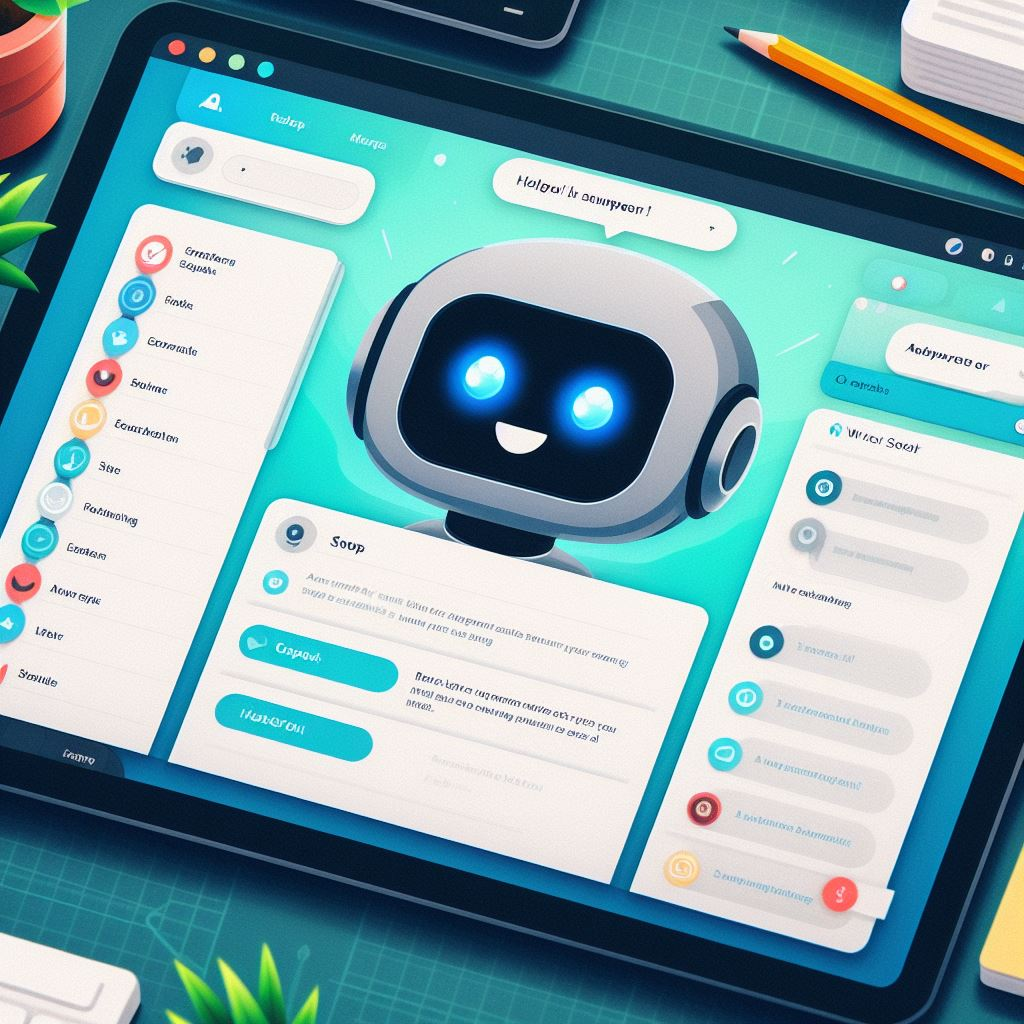Unlocking Website Engagement with Chatbot
Website engagement is key to driving user interest in your product and moving them toward conversion. One bad experience and the user is out and is on your competitor’s website. One of the ways to increase the quality of engagement is the integration of an AI chatbot on the website. With the rise of generative AI models like ChatGPT, Gemini and others, these chatbots can now perform various generative AI models like ChatGPT, Gemini, and others, these chatbots can now perform various tasks such as:
Providing Instant Support: AI chatbots can offer immediate responses to user queries, resolving issues in real time and improving customer satisfaction.Personalized Recommendations: By analyzing user behavior and preferences, AI chatbots can suggest products or content tailored to individual needs, enhancing the user experience.Gathering User Feedback: Chatbots can conduct surveys and collect feedback, providing valuable insights into user preferences and areas for improvement.Assisting in Navigation: They can help users find information quickly by guiding them through the website, reducing frustration and increasing engagement.Handling Transactions: AI chatbots can facilitate seamless transactions, from booking appointments to making purchases, thus streamlining the user journey.
The Ionic Framework: A Perfect Fit for Chatbots
The Ionic Framework is an open-source SDK for hybrid mobile app development, making it an excellent choice for implementing chatbots. Its cross-platform capabilities allow developers to create applications that work seamlessly on both iOS and Android, as well as the web. Key features of Ionic that make it ideal for chatbot implementation include:
Easy Cross-Platform Development: Ionic apps can be deployed on multiple platforms without significant changes. It comes with a suite of developer tools, including a CLI for scaffolding projects, live reload for real-time updates during development and debugging tools that make it super easy to use.Integration Capabilities: Ionic easily integrates with various backend services and APIs, essential for connecting chatbots with AI engines.Rich UI Components: Ionic provides a rich library of UI components, ensuring that the chatbot interface is visually appealing and user-friendly.Responsive Designs: Ionic ensures that your chatbot interface is responsive and adapts to different screen sizes and orientations. This is crucial for providing a consistent experience across smartphones, tablets, and desktops.Efficient Rendering: Ionic uses technologies like Shadow DOM and lazy loading to optimize the performance of your app. This ensures that your chatbot loads quickly and runs smoothly, providing a better user experience.
Steps to Implement an AI Chatbot with Ionic
Implementing an AI chatbot in your Ionic app involves several key steps. Here’s a refined guide to help you through the process:
1. Choose a Chatbot Platform
Select a chatbot platform that suits your requirements. Popular choices include:
Kommunicate: Offers integrations with generative AI models like ChatGPT.Dialogflow: Google’s natural language understanding platform.IBM Watson Assistant: Provides robust AI and machine learning capabilities.Amazon Lex: AWS’s service for building conversational interfaces.
2. Create the Chatbot — Design and develop your chatbot by following these steps
Plan Conversational Flows — Outline the interactions and user journeys your chatbot will handle.Build the ChatbotIntents, Entities, and Responses — For platforms like Dialogflow, define the intents (user intentions), entities (data to extract), and responses (what the bot says).Upload Documents/URLs — For platforms like Kommunicate, leverage generative AI by uploading relevant documents or website URLs to train the chatbot.Upload Documents to Train the ChatotUpload Website URLs to Trian the Bot
3. Integrate with the Ionic App
Integrate your chatbot into the Ionic app by following the platform-specific instructions. Each platform provides detailed integration guides. For example, use API keys and SDKs provided by the chatbot platform to connect it with your Ionic app.
Here’s an example of an API key from Kommunicate:
You can find a detailed step-by-step process of integrating your ionic app with Kommunicate here — https://docs.kommunicate.io/docs/cordova-installation
4. Testing
Thoroughly test your chatbot to ensure it meets your expectations.
Simulate User Interactions: Engage with the chatbot as a user would, testing various scenarios and edge cases.Gather Feedback: Collect feedback from real users to identify areas for improvement.Iterate: Refine the chatbot’s design and logic based on the testing results and user feedback.
5. Deployment
Once you are satisfied with the performance of your chatbot, deploy it to a server or cloud platform so that it can be accessed by users of your Ionic app.
However, a couple of things need to be kept in mind as well while integrating your app with a chatbot –
💡Integrating AI chatbots into an Ionic app requires a good understanding of both the Ionic framework and the specific AI platform’s APIs and SDKs.
💡Creating highly customized and sophisticated conversational flows can be challenging and time-consuming. In this, platforms like Kommunicate can be super helpful.
💡At times, AI chatbots can be resource-intensive, potentially affecting the performance of your Ionic app, especially on lower-end devices — hence, thorough testing is required before going live.
💡Ensure that the chatbot remains compatible with new versions of the Ionic framework by regularly updating and maintaining both the framework and the chatbot integration
That’s it! By following these steps, you will have an AI chatbot ready inside your Ionic app to engage with your customers and provide a more interactive experience. Remember to stay informed about updates, test thoroughly, and continuously refine your chatbot for optimal performance and user satisfaction.
Unlocking Website Engagement: Implementing AI Chatbots with the Ionic Framework was originally published in Chatbots Life on Medium, where people are continuing the conversation by highlighting and responding to this story.




